- europages
- >
- COMPANIES - SUPPLIERS - SERVICE PROVIDERS
- >
- sensors
Results for
Sensors - Import export
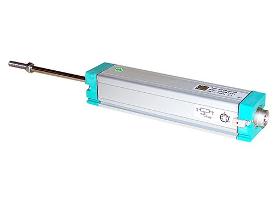
BURSTER PRÄZISIONSMESSTECHNIK GMBH & CO KG
Germany
Due to its high resolution also when measuring long distances, linear displacement measurements up to 900 mm can be carried out. Conversions between rotatory and translation movements through ball screws, wire or cord connections and so on are not necessary for direct displacement measurement. Application fields include: —Electromagnets —Deformations - bending —Pneumatic cylinders —Length tolerances —Press-insertions (longitudinal press-fits) —Feed strokes —Machine hubs —Punch, knee lever or extruder distances —Hydraulic cylinders Due to the technology employed in potentiometric displacement sensors, they always operate with a sliding contact system. Special processes are applied to give the resistance tracks low friction, low tendency to stick/slip, resistance to abrasion and long-term stability. The rod is guided in a low-play floating frontal bearing. This absorbs small angular and parallel displacements.
Request for a quote
BURSTER PRÄZISIONSMESSTECHNIK GMBH & CO KG
Germany
LOAD CELL AND TORQUE SENSOR – X/Y/Z - Model 8565 In robotics and automation engineering, the requirements for precise, tactile handling are constantly increasing. The robust 8565 multi-axis sensor with its low crosstalk enables you to monitor and evaluate your process at any time, regardless of the sensor’s orientation. With just one sensor, you can obtain accurate three-dimensional load information. Its six independent outputs let you selectively evaluate the direction of action of the loads (axial force [Fz] / lateral forces [Fx/Fy] / torque [Mz] / bending moment [Mx/My]). Thanks to its compact design and adaptation via the standardized robot flange in accordance with DIN ISO 9049-1, the sensor can be integrated into many applications quickly and easily. When the slightest deviations are detected in your fast-moving and complex production processes, you can intervene immediately to make adjustments. This helps to prevent faulty parts and reduce manufacturing costs.
Request for a quote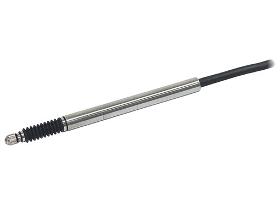
BURSTER PRÄZISIONSMESSTECHNIK GMBH & CO KG
Germany
Incremental magnetic measuring heads offer maximum precision over the full range of measurements. As a result of the magnetic operating principle and the robust mechanical construction, they are insensitive to soiling and are therefore ideally suited to use in production facilities. Thanks to the high quality of their measurements, their high protection and long service life, these sensors are used in many technologies (industry, research, development etc.). Typical applications include: —Monitoring both slow and fast movements between machine parts —Measurements of position and positional changes in components and structural foundations, of servo regulators, valve and robot controllers —Measurement of growth, and so on The incremental displacement sensors are based on a magnetic principle: consisting of a magnetic scale and a multi-slot reading head that responds to changes in magnetic flux, they detect linear movements with high precision and resolution.
Request for a quote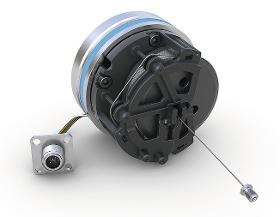
SIKO GMBH
Germany
Measuring range 0 … 2500 mm (98.42 inches). Absolute measuring system. Pressure-resistant up to 350 bar, pressure peaks up to 650 bar. High degree of flexibility, adjustable to all measuring lengths thanks to teach-in. Redundant interfaces available. Safety version usable up to Perfomace Level d. Analog, CANopen, SAE J1939, CANopen Safety interfaces.
Request for a quote
BURSTER PRÄZISIONSMESSTECHNIK GMBH & CO KG
Germany
Due to their small dimensions and sturdy construction, these miniature compression load cells made of stainless steel can be used in a wide range of industrial applications and in laboratories. This compression load cell is easy to handle and its installation is uncomplicated. Its small size makes it perfect for use in very restricted structures for both static and dynamic compression force measurements. The miniature compression load cell model 8415 is a flat cylindrical disc, the bottom of which is closed with a cover. The load application button for receiving the compression forces is an integrated part of the sensor. A strain gage full bridge is applied in the gauging member of the measuring element. This produces bridge output voltage directly proportional to the measured force. The small diameter of the sensors results in high rigidity and a short measurement range. The measuring force has to be applied centrically and free from lateral forces.
Request for a quote
BURSTER PRÄZISIONSMESSTECHNIK GMBH & CO KG
Germany
Due to their extremely compact design, these load cells can be used wherever static or dynamic load forces have to be measured in very tight spaces. Model 8416 is perfect for use in micro-technology and just as suitable for measuring tasks in the research and development sector. The ultra-miniature compression load cell model 8416 is a flat, circular disc, the bottom of which is sealed with a cover. The load application button for receiving the compression forces is an integrated part of the sensor. The sensor element inside the body carries a strain gage full bridge which outputs voltage directly proportional to the measurement variable upon application of force. The short nominal measurement distance of the ultra-miniature compression load cells due to their design provides a high degree of rigidity. If needed, the nominal characteristic value can be standardized in the sensor connection cable.
Request for a quote
BURSTER PRÄZISIONSMESSTECHNIK GMBH & CO KG
Germany
Load cell model 8417 measures the tension or compression force between both axially mounted metric exterior threads on the cylindrical sensor housing. Forces are only applied to the threadings, which are especially long, to accommodate counter nuts and must not be affected by external influences such as bending, lateral force or torsion. Any contact with units affixed to the sensor housing - even on the front - must be avoided. The measurement element is a membrane perpendicular to the axis of the sensor with a strain gage full bridge applied to the inner surface, which requires stable excitation with a rated value of approx. 1 mV/V. The connection cable is led radially out of the housing through a sleeve which is used for strain relief. FEATURES: —Measuring ranges from 0 ... 10 N to 0 ... 5 kN —Very small dimensions —Made of stainless steel —Rugged construction —Simple screw mounting —burster TEDS optionally available
Request for a quote
BURSTER PRÄZISIONSMESSTECHNIK GMBH & CO KG
Germany
This, related to its measuring range, miniaturized load cell enables an universal and reliable operation in industries and laboratories. It is well suited for compression measurements in very restricted structures. The load cell is a compact construction and made of superrefined steel. Therefore it can be used in many fields of industry, like. Examples are: — Press-in force measurements on longitudinal and transversal connections — Compression force measurements on punch and roller applicancy — Spring tension measurements on shock absorbers for cars — Contact pressure determination in push rods — Compression force measurements on compressed-air knee-lever presses Thanks to the rounded top, in shape of a little hat, the force to be measured is led into the sensor centrically and free of lateral force. Specific characteristics: Very small dimensions Drug chain qualified cable Made of stainless steel burster TEDS optionally available
Request for a quote
BURSTER PRÄZISIONSMESSTECHNIK GMBH & CO KG
Germany
The force to be measured must be introduced axially and perpendicularly to the entire surface of the inner and outer bands of the sensor in the opposite direction. Conversion of the acting force into an electrical output signal is performed by strain gages connected together in a full bridge circuit. To achieve optimal accuracy, the base of the sensor should rest on a smooth level surface, hardened to at least ≥ 58 HRC with sufficient dimensions. The base cover welded to the surface has a stabilizing effect on the sensor element. Lateral forces must be avoided anyway as they distort the measured results. Tension and bending relief for the sensor cable is to be carried out on the machine side. FEATURES: — Measuring ranges from 0 ... 100 N to 0 ... 200 kN — Centric throughout hole — Flat disc design — Made of stainless steel — Completely welded sensor body — Nominal characteristic value standardization possible — burster TEDS optionally available
Request for a quote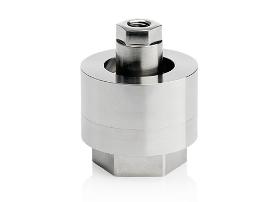
BURSTER PRÄZISIONSMESSTECHNIK GMBH & CO KG
Germany
This low cost tension/compression load cell is an especially robust component, which can be easily integrated in a girder assembly between two cables or chains for measuring force. The standard model comes with internal thread, allowing any adapter parts, for instance eye brackets, to be fitted in the axis of symmetry. Alternatively, the optionally available adapters with external thread can be used for quick and easy screw-fitting into a threaded hole made for the purpose. The radial connection cable is extremely flexible and designed for a wide range of motion. In order to achieve the greatest possible stability for such a small sensor, making it suitable not only for the laboratory but also for industrial use, all parts have been welded together including the cable guide bush in the sensor housing. burster TEDS with an electronic sensor datasheet or standardization of the output signal in the sensor connecting cable are offered as options
Request for a quote
BURSTER PRÄZISIONSMESSTECHNIK GMBH & CO KG
Germany
These models are among our most precise and yet mechanically robust miniature load cells. High accuracy, finely graded measuring ranges, small dimensions and the simple introduction of force via opposing threaded pins open up a wide scope of laboratory and production applications. Their sophisticated engineering with integrated support membranes and overload protection reduces additional design expense in many applications, e.g. for external overload protection or guiding the parts introducing force to the cell. The result is that less space is required, less material is used and less weight is involved. Last but not least, there is hardly any friction on components that could falsify the measurement result. The force to be measured is introduced centrally and axially to the cylindrical sensor body in the tension or compression direction by means of the two threaded pins. This requires the sensor to be mounted without any elements touching the end faces of the sensor housing.
Request for a quote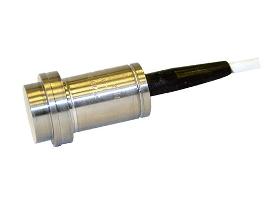
BURSTER PRÄZISIONSMESSTECHNIK GMBH & CO KG
Germany
This transducer can be used anywhere thanks to its small size. Designed to work without a measuring chamber (uses a flush front diaphragm instead), this transducer is ideal for any measurements where the material to be measured may leave problematic residues. The range of suitable applications is even greater thanks to a choice of screw-on or weld-on adapters. Areas of use: Bottling plants, food industry Mixing facilities for the chemicals industry Pharmaceuticals Cosmetics industry Bioengineering These miniature pressure transducers are made entirely of titanium and therefore have outstanding resistance to corrosion. These convert the pressure-induced deflection of the diaphragm into a change in electrical resistance, which can be amplified, measured and processed by external electronic circuitry.
Request for a quote
BURSTER PRÄZISIONSMESSTECHNIK GMBH & CO KG
Germany
This high-precision torque sensor can be used to perform both static and dynamic measurements on non-rotating parts. The internal and external square drive design make this sensor especially easy to fit in existing or new screw-fitting applications. Quality assurance and monitoring of screw-fastening tools are just two applications that can take full advantage of sensor features such as USB port, built-in amplifier and side-load absorbing bearings. With no rotating parts, this sensor needs no maintenance when used correctly. Available accessories include mounting brackets and flange adapters, which enable quick, easy and practical integration of the sensor into existing or newly developed setups and test benches. The strain-gauge based sensor’s modular design allows precise configuration for the desired application. With the integrated amplifier option, the sensor directly supplies a voltage signal of 0 ... ± 10 V that is proportional to the torque.
Request for a quote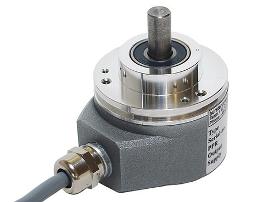
BURSTER PRÄZISIONSMESSTECHNIK GMBH & CO KG
Germany
Incremental rotation sensors are used wherever displacement, positions or speeds have to be measured accurately. They are therefore important interfaces between the mechanical and electronic parts of a machine. Mechanically robust, electrically reliable and resistant to extreme ambient conditions; these are the outstanding properties offered by this sensor. Typical applications include —Machine tools —Wood and plastic machining —Textile machines —Lifts —Door systems —Paper machines —Drive equipment —Assembly and handling equipment —Packaging machines —Scales —Test machines —Conveying equipment —Doors and gates Specific characteristics —Degree of protection IP65, all-around —Robust —High resistance to interference —Rotary speed sensor: 60 pulses/turn (standard) —Angular displacement sensor: up to 3600 pulses/turn —Detection of rotation direction (channels A and B) —Reference pulse (channel N) —Special versions on request
Request for a quote
BURSTER PRÄZISIONSMESSTECHNIK GMBH & CO KG
Germany
The force measuring chain is an universal reference measuring chain for the calibration of press-fit force measuring equipment. It finds applications in the quality assurance, commissioning and equipment monitoring fields. A DAkks calibration certificate is included so that the force measuring chain can be traced back. The calibration is traceable through accreditation at the German Accreditation Body. The calibration certificate records the displayed values for mounting positions at 0°, 120° and 240°. During calibration in field, the reference load cell is inserted in line with the flux of the press-fit measuring equipment. The force application is of central significance here for the quality of the measurement. Special force application parts are required, so that the line of action of the force agrees as exactly as possible with the geometrical axis of the load cell that is to be measured (central loading).
Request for a quote
BURSTER PRÄZISIONSMESSTECHNIK GMBH & CO KG
Germany
The 7270 TRANS CAL can run on standard or rechargeable batteries for portable use or from an external power supply. The handy model 7270 digital indicator supports load cells, pressure sensors and torque sensors based on strain gages. The 14 mm high display shows the current measured value. The TARE function allows any base load that may be present to be zeroed. The clear, well organized control structure enables quick and easy configuration of the TRANS CAL. The 7270 is equipped with a charge state indicator. Features: — Easy to operate - For all load cells, pressure sensors and torque sensors based on strain gages — Tare function - Excellent value for money - Built-in charge controller
Request for a quote
BURSTER PRÄZISIONSMESSTECHNIK GMBH & CO KG
Germany
With its flat construction this force sensor is specially designed to be fitted to a pedal. By this, the operator's forces for each respective action, for example brake tests, can be measured directly and the reaction of the vehicle or machine can be designated. This applies to real test drives, as well as in driving simulators. Due to the special construction of the membrane, it is irrelevant whether an upright or hanging pedal is concerned. The sensor is designed in a way that unavoidable lateral forces have as little impact on the measurement result as possible. Using a central internal thread on the control surface, various machine-related adaptor parts can be easily mounted. Because the pedal is convex-shaped on its surface, the pedal force sensor has a very rigid base plate and therefore can easily be applied to various geometrics. The mounting can even take place on a pedal with an elastomer covering.
Request for a quoteDo you sell or make similar products?
Sign up to europages and have your products listed
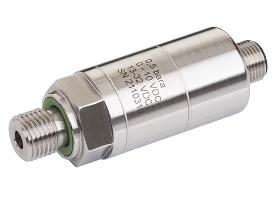
BURSTER PRÄZISIONSMESSTECHNIK GMBH & CO KG
Germany
The sensor model 8228 with its measuring accuracy of 0.05% F.S. (for the measuring ranges ≤ 1 bar, the measuring accuracy is 0.1% F.S.) ideally suited as a reference sensor. The compact dimensions, the robust housing and the industrial-grade output signal result in a very wide range of applications. All components in contact with media are made of stainless steel. An integrated measuring amplifier converts the measuring signals directly into interference-free voltage signals or current signals that can be transmitted over long distances. With the „gage“ measurement type, the pressure measurement is carried out against the ambient pressure, the sensor has a bore that is protected against ambient influences to compensate for the ambient pressure. With the „Absolute“ measurement type, the applied pressure is measured against an enclosed vacuum; this measurement type is available from the measuring range 0 ... 250 mbar. The electrical connection is made via an M12 x 1 connector.
Request for a quote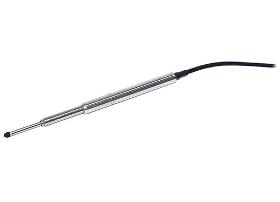
BURSTER PRÄZISIONSMESSTECHNIK GMBH & CO KG
Germany
Incremental magnetic measuring heads offer maximum precision over the full range of measurements. As a result of the magnetic operating principle and the robust mechanical construction, they are insensitive to soiling and are therefore ideally suited to use in production facilities. Thanks to the high quality of their measurements, their high protection and long service life, these sensors are used in many technologies (industry, research, development etc.). Typical applications include: —Monitoring both slow and fast movements between machine parts —Measurements of position and positional changes in components and structural foundations, of servo regulators, valve and robot controllers —Measurement of growth, and so on The incremental displacement sensors are based on a magnetic principle: consisting of a magnetic scale and a multi-slot reading head that responds to changes in magnetic flux, they detect linear movements with high precision and resolution.
Request for a quote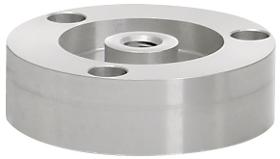
BURSTER PRÄZISIONSMESSTECHNIK GMBH & CO KG
Germany
The tension & compression load cells from the 8523 series are designed for a wide range of uses. The sensors feature many benefits, including three point-contact mounts for tilt-free installation. Thanks to this feature, excellent measurement results can be achieved even with a sub-optimum mounting surface. The force to be measured is applied to the central threaded hole in the tension or compression direction. For measuring purely compressive loads, using load buttons from our accessories range saves the need for complex sensor-integration mechanisms. Tensile loads in rods or chains can also be detected with ease using the optional pull plate. Inside the sensor is an elastic membrane, on which are applied strain gages connected in a full Wheatstone bridge. FEATURES Measuring ranges from 0 ... 20 N to 0 ... 5 kN Tilt-free installation thanks to point-contact mounts Excellent price/performance ratio Easy mounting burster TEDS optionally available
Request for a quote
BURSTER PRÄZISIONSMESSTECHNIK GMBH & CO KG
Germany
This force measurement chain was developed for applications where a low cost solution is more important than achieving high levels of accuracy. The sensors strain gauge technology allows the measurement of static and dynamic forces. The load cell is also designed for applications that provide only little space due to its compact design. These properties, together with the sensors dust protection, make the measuring chain suitable for a wide range of applications, such as Industrial manufacture Manufacture of customized machinery Geological investigations Motor vehicle engineering Commercial agriculture Bridge building The body of the sensor is a flat, cylindrical disk, into which a domed force application knob is integrated. It is important that the force is applied axially to the center of the sensor. The domed form, however, minimizes the effect of a force that is not exactly axial.
Request for a quote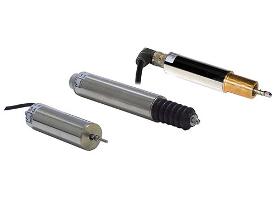
BURSTER PRÄZISIONSMESSTECHNIK GMBH & CO KG
Germany
Inductive displacement sensors using the principle of the differential transformer (LVDT) can be used to measure displacement and, indirectly, magnitudes that can be converted into displacements such as force, pressure, strain, torque, vibration and so forth. Thanks to the high quality of their measurements, their high protection and long service life, these sensors are used in many technologies (industry, research, development, etc.). Applications include measuring, controlling, regulating and monitoring both slow and fast movements between machine parts, measurements of position and positional changes of components and structural foundations, servo regulators, valve and robot controllers, growth measurements and so on. Their design is robust - the internal coils and electronics are potted - as a result of which the sensors can easily withstand shock and vibration.
Request for a quote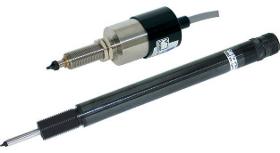
BURSTER PRÄZISIONSMESSTECHNIK GMBH & CO KG
Germany
Linear displacements and mechanical values which can be converted to displacements (e.g. compressive and tensile force, strain, torque and vibration) may be measured by these DC/DC displacement sensors. The probe tip of these sensors is pushed onto the measuring object by a spring. This makes it possible to use these sensors were a mechanical modification of the measurement object (mounting hole) is not allowed or difficult. Output voltage as function of the displacement with the impedance as parameter. Sensors of series 87350 generally consist of an oscillator, a demodulator and a transformer with moveable core. They are energized by DC voltage. The oscillator uses this DC voltage to generate the carrier frequency, which is needed for the operation of the sensor. Dependent on the position of the core, which is made of ferromagnetic material, voltages are induced by the two secondary coils of the transformer.
Request for a quote
BURSTER PRÄZISIONSMESSTECHNIK GMBH & CO KG
Germany
Potentiometric displacement sensors are used for direct, precise measurement of mechanical displacements. The mechanical parts of the measuring equipment must be set-up in such a way that the sliding shaft can move without play or lateral forces. A special multi-finger slider ensures good contact even when the adjustment speed is high or in the presence of vibration. With its housing diameter of only 12.7 mm, the model 8709 is also suitable for highly compact structures. The movable fastening clamps allow the user variable options for attaching the sensor without complication. Optionally available adaptations, such as flange and ball joint versions, extend and complement the range of possible applications. Typical fields of application include: Measuring the stroke on riveting machines Measuring insertion distances Offset measurements on bearings Spring travel measurements on axes Measurements of the movement of hoisting platforms Length measurements on pipe bending machines
Request for a quote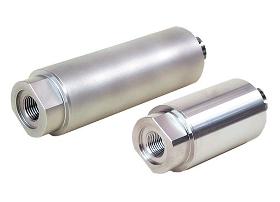
BURSTER PRÄZISIONSMESSTECHNIK GMBH & CO KG
Germany
High-precision pressure sensors from the 8201 series provide exact measurements while exhibiting very little sensitivity to mechanical stresses. Their application therefore goes well beyond research and development laboratories. They are also outstandingly suited to industrial use in quality assurance or for measurement and control tasks in production. Their robust mechanical and electrical construction guarantees good long-term stability and high reliability, while being resistant to aggressive media – which can be measured in liquid or gaseous states. The structure of the sensors includes no mechanical moving parts, which is why they show so little sensitivity to impact and vibration. The pressure sensors can be configured with options to suit the user. Standard types are available ex-stock, and customized customer versions can also be provided. Aeras of application are: —Research and developmemt —Test rigs —Mechanical engineering —Plant control and monitoring
Request for a quote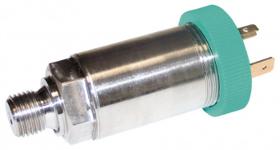
BURSTER PRÄZISIONSMESSTECHNIK GMBH & CO KG
Germany
With its rugged housing and a stainless steel sensor element, the transducer is particularly robust and ideally suited to the harshest environments. This also means that the sensor can be installed anywhere with no effect on the measurement signal. The built-in instrumentation amplifier converts the sensor signals into noise-immune voltage signals or current signals that can be transmitted over relatively long distances. For high viscose materials, a front-level membrane M12 x 1 is available, and with this disruptive dead volumes can be expelled. The sensor has a small protected hole on the rear to allow measurement of atmospheric pressure (measurement type relative). For the absolute measurement option, the applied pressure is measured with respect to an enclosed vacuum. As an electrical connection, a DIN 43650A valve connector or an M12 x 1, 4-pin connection is available.
Request for a quote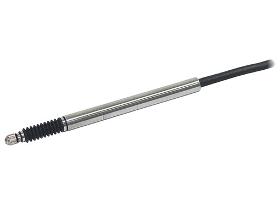
BURSTER PRÄZISIONSMESSTECHNIK GMBH & CO KG
Germany
Incremental magnetic measuring heads offer maximum precision over the full range of measurements. As a result of the magnetic operating principle and the robust mechanical construction, they are insensitive to soiling and are therefore ideally suited to use in production facilities. Thanks to the high quality of their measurements, their high protection and long service life, these sensors are used in many technologies (industry, research, development etc.). Typical applications include: —Monitoring both slow and fast movements between machine parts —Measurements of position and positional changes in components and structural foundations, of servo regulators, valve and robot controllers —Measurement of growth, and so on The incremental displacement sensors are based on a magnetic principle: consisting of a magnetic scale and a multi-slot reading head that responds to changes in magnetic flux, they detect linear movements with high precision and resolution.
Request for a quote
SIKO GMBH
Germany
High-resolution magnetic absolute sensor for use in dynamic processes Max. resolution 1 μm. Repeat accuary 10 μm. System accuracy up to 10 μm. SSI, RS485, DRIVE-CLiQ output circuits. Additional analog real-time signal output Sin/Cos 1 VSS for highly dynamic control (SSI/RS485). Signal period 1 mm. Certified according to SIL2 (DRIVE-CLiQ) for safety applications.
Request for a quote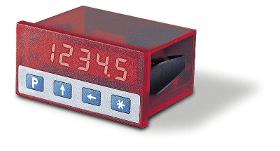
SIKO GMBH
Germany
Display accuracy max. 10 μm. Repeat accuracy max. ±0.01 mm. Incremental measurement and calibration function. Direct reference/offset value input. Calibration input. Works with sensor MSA.
Request for a quoteResults for
Sensors - Import exportNumber of results
284 ProductsCompany type
Category
- Sensors (242)
- Precision measuring instruments (9)
- Measurement and control instruments (7)
- Vehicles - mechanical components and parts (5)
- Machine vision system (3)
- Inductive sensors (2)
- Laboratory equipment and instruments (2)
- Measurement and regulation equipment and instruments - electricity and other energy (1)
- Towel and soap dispensers (1)
- 3D scanner (1)
- Barometers (1)
- Calibration equipment (1)
- Caps, metal (1)
- Drilling - machine tools (1)
- Navigation - charterers (1)
- Switching systems (1)